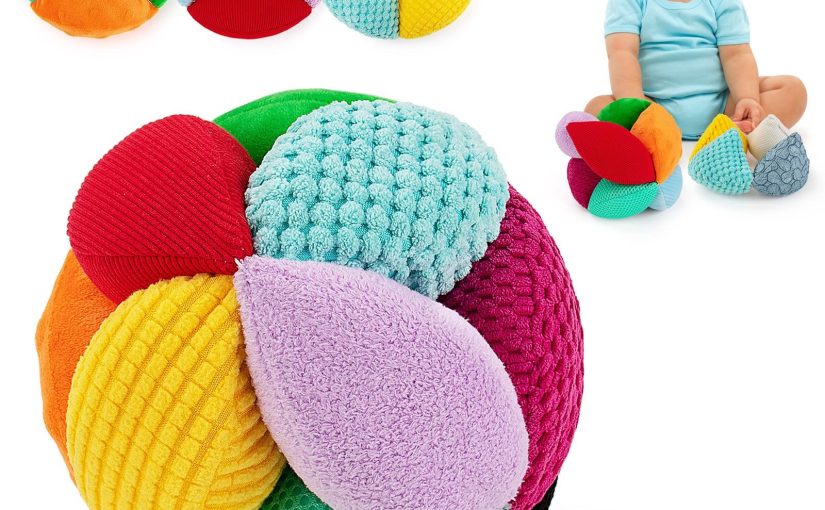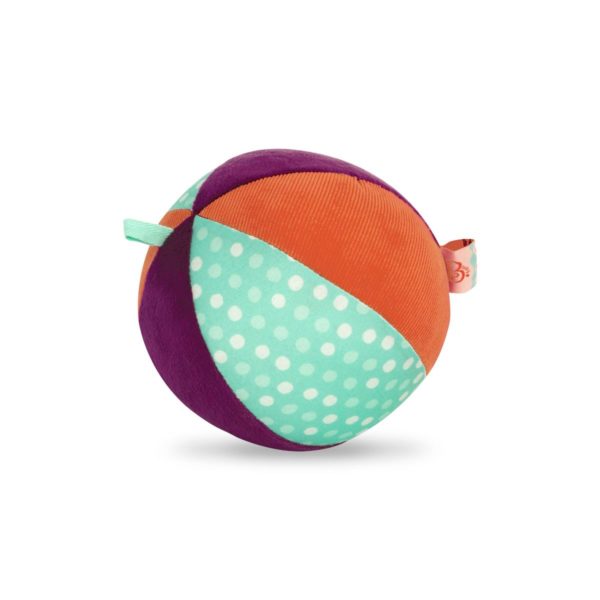What are Montessori Sensory Balls
A fabric sensory ball is a soft, tactile toy designed to stimulate a child’s senses. It is typically made of various textured fabrics such as velvet, corduroy, satin, and fleece, providing different sensory experiences when touched. These balls may also have different shapes, patterns, and colors to further engage a child’s senses. Fabric sensory balls are often used in sensory play activities to help children develop their fine motor skills, hand-eye coordination, and sensory perception. They can also be a calming tool for children who experience sensory processing challenges.
Montessori sensory balls, also known as baby balls, are play items crafted for young children. They come in varied sizes, textures, and colors, and are made from safe, child-friendly materials. Designed to stimulate a child’s development, these balls encourage sensory play and learning. Starting from infancy, they help babies to develop their sense of touch and sight. They can be made of silicone, fabric, or other materials that invite tactile exploration. Variants like fabric sensory balls are gentle for young ones to hold and explore. These sensory balls are key in engaging little ones in fruitful play. They fit well into a Montessori learning environment, where self-guided play is valued. By using sensory balls, children get to investigate and find out more about the world around them. Montessori sensory balls are a must-have in nurturing a young child’s growth and exploration.
Benefits of Montessori Sensory Balls
Montessori sensory balls offer much more than play. They are valuable for a child’s overall development.
Motor Skills Development
These sensory balls help tiny hands to grab, throw, and roll. This strengthens muscles and improves control.
Hand-Eye Coordination
Rolling and catching these balls boosts hand-eye coordination. Kids learn to follow the ball and react quickly.
Multisensory Stimulation
They come in various textures and colors. This stimulates multiple senses at once, aiding in cognitive development.
Emotional Growth
The soft texture of a fabric sensory ball can calm and comfort. It helps children manage their feelings better.
Social Skills Enhancement
When kids play together with sensory balls, they talk, share, and take turns. This builds vital social skills.
Tactile Discrimination
Exploring different textures teaches kids about variety. They learn to notice and differ between sensations.
Attention and Focus Improvement
Trying to keep a rolling ball in control teaches persistence. It helps sharpen focus and lengthens attention spans.
Types of Montessori Sensory Balls
Montessori sensory balls come in many shapes and textures. Each type offers unique benefits and experiences.
Montessori Textured Sensory Balls in Silicone
Silicone sensory balls have various surface textures. They are soft and safe for babies to explore. These balls aid in touching and feeling different patterns.
Montessori Sensory Balls with Sound or Light
Some balls make sounds or light up when moved. They help babies learn cause and effect. Also, they stimulate hearing and sight.
Fabric Sensory Balls
Fabric balls are soft and easy to grab. They come in different colors and patterns. Babies can squeeze and hold them for comfort.
Puzzle Balls
Puzzle balls have sections that fit together. They challenge toddlers to think and solve. This encourages problem-solving and motor skills.
Sensory Reflective Balls
Reflective balls shine and show light patterns. They catch babies’ eyes and help with visual tracking. Babies learn about light and reflections with these balls.
Introducing Sensory Balls to Babies
Introducing sensory balls early can benefit babies’ growth and learning. These balls come in forms that grab young ones’ attention and invite action. Parents and educators start with simple, engaging practices for safe exploration.
Age-Appropriate Activities
For babies, activities with sensory balls should be simple. Roll a fabric sensory ball to your baby and watch them respond. Place a ball within reach and encourage reaching and touching. Use bright colors and soft textures to hold their interest.
Safety Considerations
Always watch your baby during play. Choose sensory balls made from non-toxic materials. Ensure there are no small parts that pose choking risks. Regularly check the ball’s condition for safety.
Enhancing Exploration
Experiment with textures. A fabric sensory ball offers a gentle touch. Let your baby feel and squeeze it. Guide their hands if they need help. Encourage playful discovery without forcing activities.
Integrating Play and Learning
Learning happens when play is fun. Use sensory balls to introduce new concepts. Show a rolling ball to teach cause and effect. Offer different balls to compare. Create a joyful learning atmosphere at home or in daycare.
Creative Playtime with Montessori Sensory Balls
Montessori sensory balls are not just toys; they are tools that encourage creative play and learning. These balls fit perfectly in Montessori prepared environments, designed to nurture a child’s development through self-directed activity, hands-on learning, and collaborative play.
Role in Montessori Prepared Environments
In Montessori settings, sensory balls serve as key elements that entice children to explore. They spark curiosity and allow children to learn at their own pace. The prepared environment is orderly, simple, and accessible, making sensory balls a natural fit for engaging the young mind. Through these tools, children develop critical thinking and the skills needed for a lifetime of learning.
Games for Individual and Group Play
Sensory balls are versatile for both solo and shared play. A single child can practice rolling, tossing, and catching to enhance motor skills. In groups, children can pass balls to each other, learning to take turns and communicate. Games like ‘catch’ or ‘roll and chase’ are simple and boost coordination and social interaction.
Combining with Other Learning Materials
Pairing sensory balls with other Montessori materials can amplify their benefits. Use sensory balls in sorting games to teach about colors, sizes, and textures. Roll them down ramps to demonstrate gravity and motion. Mix them with blocks or puzzles to create integrated learning experiences. This fusion of materials paves the way for innovative problem-solving and deeper understanding.
Fabric sensory balls, chosen for their diverse textures and ease of grip, can make playtime more fulfilling for children. When selecting activities, always consider the child’s age and safety to ensure a beneficial and enjoyable experience. Maximizing the use of sensory balls in play is fundamental for cognitive and sensory development. As children squeeze, bounce, and roll these balls, their little minds and bodies work in unison to discover, learn, and grow.
Maintaining and Caring for Sensory Balls
Proper maintenance of Montessori sensory balls is crucial for their longevity and safety. By following simple care instructions, you can ensure that these valuable learning tools remain in top condition, serving their educational purpose for years to come.
Cleaning and Storage
To keep sensory balls clean, wash them with gentle soap and warm water.
Dry them thoroughly before storing to prevent mold or mildew.
Keep them in a cool, dry place, away from direct sunlight or harsh conditions.
Use clean, dry bins or baskets to separate and organize different types of balls.
Regular Safety Checks
Inspect sensory balls regularly for signs of wear or damage.
Look for rips, tears, or loose particles that could be a choking hazard.
Replace any ball that is damaged, to ensure continued safe play.
Engage with your child during play to monitor the condition of the balls.
Choosing Quality Materials
Select sensory balls made from durable, child-safe materials.
Verify that the balls are non-toxic and free from harmful chemicals, like BPA.
Choose fabric sensory balls with secure stitching and safe fillings.
Opt for reputable brands or manufacturers known for their quality and safety standards.
By dedicating attention to the maintenance, safety checks, and selection of quality materials for sensory balls, parents and educators can provide a secure and enriching play experience for children.



